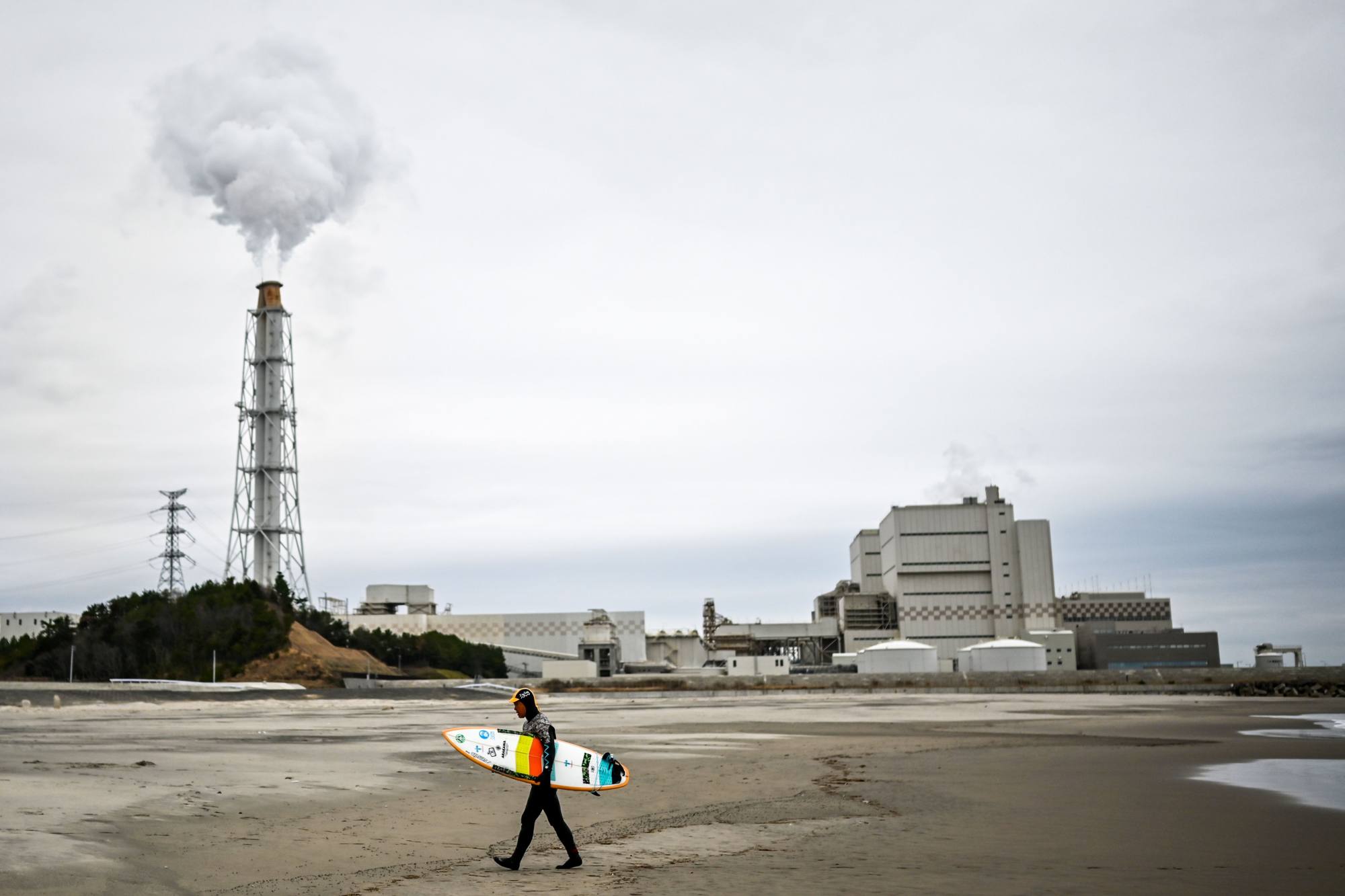
Japan’s Fukushima water plan dashes town’s hopes of world surfing event, but residents stay upbeat
- Kitaizumi Surf Festival 2023 had hoped to draw 300 top surfers to compete and promote Fukushima prefecture’s recovery, but will now be a much smaller event
- Despite a lack of official support, Minamisoma locals remain hopeful a successful surfing competition will bring visitors back
More than 500 local residents died as a result of the tsunami inundating the town’s coastal areas, with yet more still unaccounted for. Much of the local infrastructure, including schools, shops, hospitals and businesses were destroyed in the initial onslaught, although the impact of the nuclear crisis was arguably worse.
The town was ordered to evacuate in the hours after the reactors began to melt down. It was not until July 2016 that the evacuation order for the last remaining parts of the town was lifted. Even now, only a fraction of those who lived in Minamisoma before the tragedy have returned.
The decision triggered backlash from Japan’s neighbours including China, environmental groups, residents of northeast Japan and local fishermen who fear their catches will once again be unsellable.
The International Surfing Association (ISA) had in March said it could not officially support the Minamisoma event due to concerns over the impending water release, citing the “current uncertainty regarding its potential impact on the quality of the water”.
Surfers and the committee tasked with promoting Minamisoma are putting on a brave face despite the disappointment and insisting there is still hope for the future.
“I was very excited when we found out that surfing would be in the Olympic Games for the very first time here in Japan and I think it is very important to continue that sense of excitement for the sport,” said Shinji Murohara, 55, head of the Fukushima Surfing Association.

A partisan home crowd cheered as Kanoa Igarashi took silver in the men’s shortboard competition and Amuro Tsuzuki won bronze in the women’s competition, leaving Japan as the only nation to clinch two medals from the first Olympic surfing competition.
While Japan has a number of excellent surfing spots, Minamisoma is special, says Murohara, a local resident who started surfing at 18 and makes sure he gets in the water at least twice a week, year-round.
Before the 2011 disaster, the Kitaizumi beach welcomed an estimated 100,000 locals and tourists, sunbathers and water sports fans every summer. Today, those beaches are far more sparsely occupied.
“This is the most easterly spot on the main island of Honshu and it gets the best Pacific swells from a variety of directions,” he said. “The waves are good throughout the year, but best from September to November.”
Murohara insists the ISA has not completely withdrawn from Minamisoma’s planned annual event and that it has promised to reconsider next year’s competition based on water quality tests.
With releases from the Fukushima plant scheduled to last for between 20 and 30 years and the international controversy unlikely to disappear overnight, it is unclear how soon the water might pass the quality tests.
“We have been fully briefed by the Japanese government on the release of the treated water, we understand their explanations and we consider the water to be safe,” Murohara told This Week in Asia.
“The surfers here understand the situation, they are confident it is safe and we want to tell the rest of the surfing world about Minamisoma.”

Takahiro Kono, head of the city’s Surf Tourism Promotion Committee, echoes Murohara’s feelings, adding that plans are ongoing for a smaller-scale surf festival this summer.
This year’s contest will run over three days from September 16, with 64 Japanese surfers competing and a number of foreign surfers taking part in exhibition events.
“We are looking forward to having a good event that also helps with the reconstruction of Fukushima prefecture,” Kono said. “We hope that putting on a competition will boost the domestic surf scene and be good for Fukushima.”
The city intends to invite an independent organisation to carry out surveys of the water quality off Minamisoma after the release of water from the Fukushima plant begins. The town intends to apply for official recognition again if it gets the all-clear.
The ultimate aim is to hold an event so renowned it can eventually be referred to as the surfing world cup.
(

